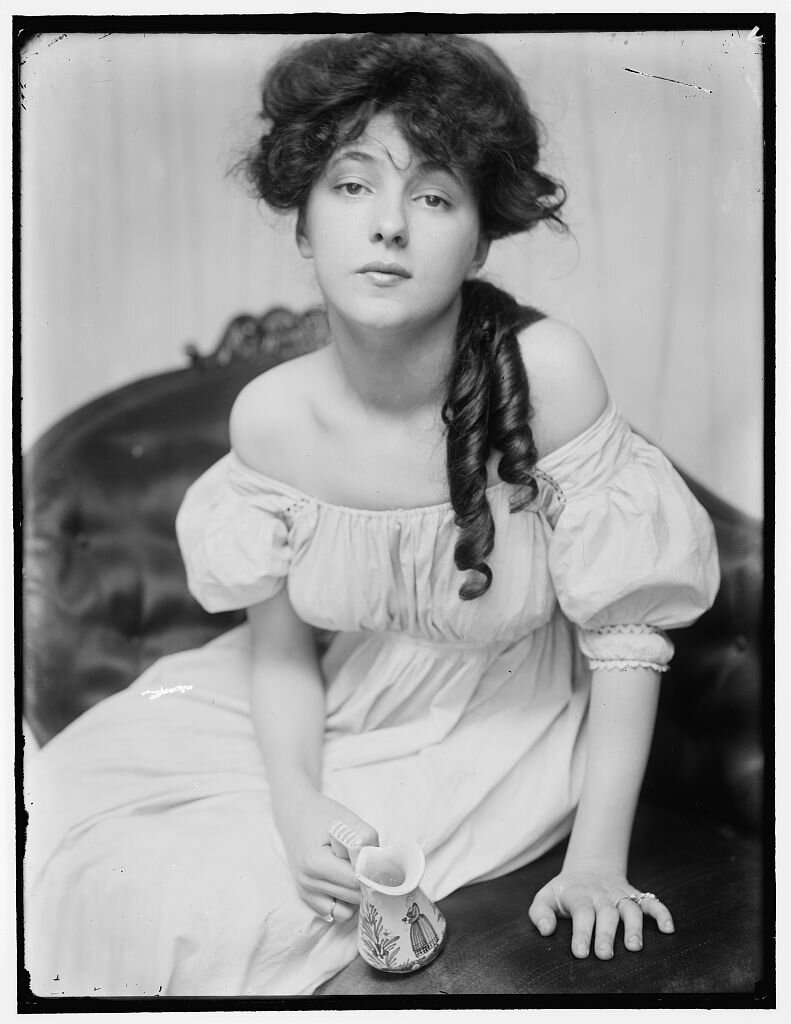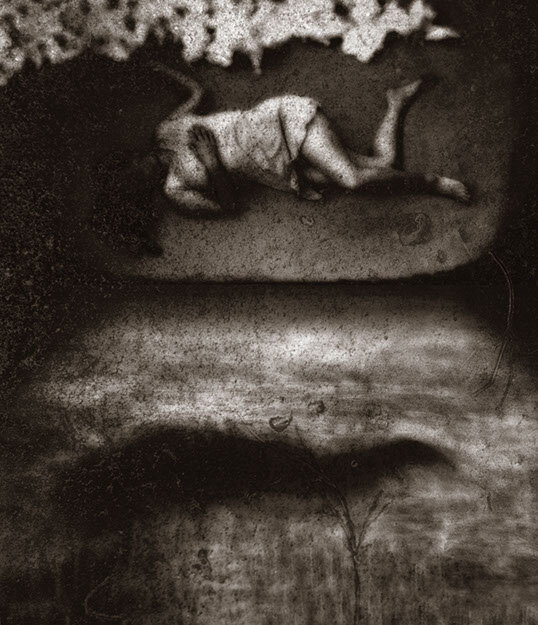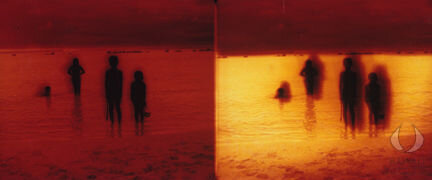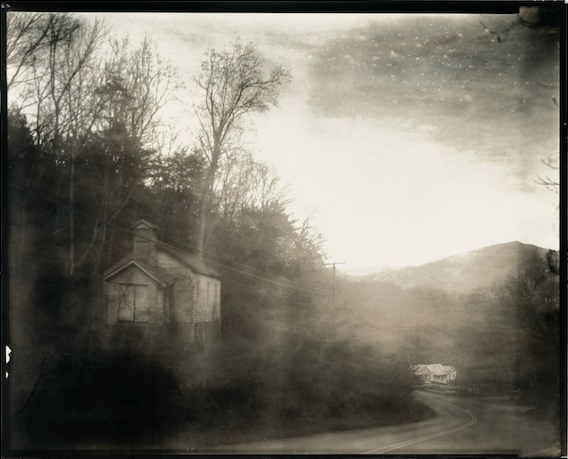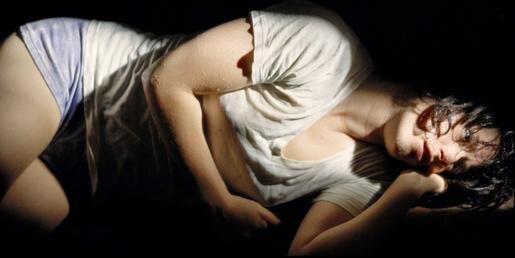Celebrating Women's History Month
We’ve decided to commemorate Women’s History Month by closing it out with a post celebrating women of photography who have influenced us. We hope you enjoy!
Blue Mitchell’s List - A personal history (in chronological order of influence)
Jump to Diana Nicholette Jeon’s List
Rachel Lauden
Rachel was my first photography professor. Rachel was responsible for teaching me black and white and color darkroom printing, as well as all the fundamentals of shooting 35mm. At the time I was a film major at Montana State University but after falling in love with photography I switched my major. Rachel asked me to be her TA for the 200 level darkroom class and it was then I really got to know the ins and outs of the darkroom and proper printing methods. Rachel also challenged me to push the medium from the get-go. Her influence and support of my work were very significant and she may be the reason I am where I am now in this photography community.
Gertrude Käsebier
Käsebier’s work and career fascinate me and she has been an inspiration for both my work and career. This photo is one of my all-time favorite images and still resonates with me to this day. Some work is just timeless!
Käsebier, Gertrude, Evelyn Nesbit about at a time when she was brought to the studio by Stanford White. , ca. 1900. Photograph.
Sally Mann
That’s pretty much all one has to say… Sally Mann. I will say though that I’ve always appreciated her love of the craft and her willingness to experiment with the medium.
Mann, Sally, The New Mothers, 1989. © Sally Mann
Libby Rowe
Libby Rowe is a gem. She was my first professor at the Oregon College of Art and Craft where I finished my degree. Libby is blunt and hilarious. She challenged me over and over and supported my desire to try new things. Although I only spent one solid year with her she likely had the most influence in myself and the direction of my work. She empowered me every step of the way and it gave me the confidence to not only be a successful artist but she also inspired me to want to teach and promote other photographers. Libby’s personal work is witty and irreverent, focused on the feminine and the idiocy of the patriarchy. Over the years I’ve had the pleasure to work with Libby on numerous Diffusion projects and exhibits and I’m proud to call her my friend.
Julia Margaret Cameron
Cameron’s influence is undeniable, but I specifically looked to her work while creating my BFA thesis project in college “The Muse Project”.
Julia Margaret Cameron, 'Call I Follow, I Follow, Let Me Die' (sitter Mary Hillier), carbon print, 1867, printed later. © Victoria and Albert Museum, London
Francesca Woodman
I discovered Woodman’s work a little later than other historically significant figures. For such a short career, her influence is so very prevalent for contemporary photographers. Although her work may not be influential on my own, it has certainly been emulated in many of the works I appreciate and publish.
Francesca Woodman, Untitled, from Angel Series, Rome, Italy, 1977. © and courtesy Charles Woodman / Estate of Francesca Woodman and DACS, 2020
Vanessa Brown
This lady has been a huge influence on my personal work and professional career. Brown is one half of the duo Louviere+Vanessa whose work I admired from afar early on in their careers. I sent them my first issue of Diffusion and asked if they would have any interest in being featured in volume II. To my surprise Vanessa actually responded and was completely on board with collaborating, I was shocked! Just having their work in my magazine validated what I was doing and truly motivated me to push forward with the second issue. Vanessa also started Photonola festival back in 2005 and invited me to come to join in on the fun after our second issue was published. This again, validated what I was doing and launched me into the whole festival scene, expanding my vision and opportunities. I would not be here without her friendship and support over the past 10 years. But more importantly, she’s become one of my most favorite people and even though we don’t see each other much, I adore her.
Heidi Kirkpatrick
Heidi has been my Portland photography foundation for years now. I immediately fell in love with her and her work after meeting her at Photolucida. I was so pleased she lived in Portland and she has been a constant source of inspiration and a personal confidant. I’m so grateful for her friendship and working with her over the years has been a joy! The themes Heidi addresses in her work are primarily focused on women's issues and family history. She IS women’s history.
Lifeline © Heidi Kirkpartick
Branch II © Heidi Kirkpartick
Family Service © Heidi Kirkpartick
Diana’s Nicholette Jeon’s List - I’ve put my list in alphabetical order.
Gaye Chan is a multidisciplanary artist based on O’ahu. She was head of the photo program at UH Manoa while I was there as an undergraduate student. I begged my way into her class called Professional Practice. I can unequivocally state that that course was the most important, foundational class I took during any point in my schooling. Chan also was instrumental in my decision to leave Hawaii to obtain my graduate degree. Though fraught chaotic impact on the lives of my family and I, it was the right decision. My favorite project of hers, called Flagrante Delicto, was shown at the Honolulu Museum of Art during the semester I was in her class. Essayist Naomi Long wrote in the exhibition catalog, “using found negatives made by professional and amateur photographers from the 1940s to 1970s, renders visible Hawaii's history without the guardrail of nostalgia. Damaged by moisture and time, Chan's prints reveal streaks of light, clusters of fungi, focal distortions and cracks. The red infusion throughout connotes desire, violation, and consequence, while the color yellow suggests illumination, power, and atonement. In Flagrante Delicto, Chan engages in an impassioned examination of the master plans implemented decades ago that propelled Hawai`i toward non-sustaining agriculture and tourism.”
(Images source: Hawaii State Foundation for Culture and the Arts Art in Public Places collection)
Spector 1
Goldin’s work, The Ballad of Sexual Dependency left a powerful impact on me. Graphic, sad, and poignant, it left me curious - wanting to return to look, to stare again, for many more hours.
(image source: MoMA)
Nan and Brian in Bed, New York City (1983)
Kapulani Ann Landgraf
Landgraf is a an O’ahu-based artist who celebrates Native Hawaiian culture while also addressing the legacies of colonialism and its impact on indigenous Hawaiian rights, value and history. Personally, I’ve been following her work since the late 1990s. Although we taught at the same college, I’ve never formally met her. The work I’ve chosen here, Ponoiwi, is a mixed-media photographic installation that addresses the reshaping of beaches and natural features due to sand mining and construction in Hawai’i.
(images source: Honolulu Museum of Art)
No other female photographer covered the dust-bowl period of America as much as Dorothea Lange. Her WPA work depicting impoverished people during the great depression is harrowing and unforgettable.
Here, I’ve chosen to focus on the government work she did from 1942 to 1945, which included photographing Japanese American families during the interment. Largely unseen until approximately 2010 due to governmental censorship, it documents an unseemly episode of American history. I live on an island alive with a large population of Japanese-Americans. The history of interment is alive and real here.In 2017, curator Maurice Berger wrote an essay in the New York Times Lens Blog that stated, “Ms. Lange’s photographs remain as relevant as ever. Anti-immigrant, racist and nationalist fervor are again on the rise. And some are championing the censoring, limiting or discrediting of reporting in order to manipulate news and information.” And the prejudice and hate crimes against Asian- Americans grows even worse as I write due to President Trump’s characterization of the “Chinese virus.”
(image source: Anchor Editions)
Henry Akio Itano, Sacramento, CA, 1942
There is no other female portrait photographer as famous as Annie Leibovitz. Her portfolio is a who’s who volume in itself. It’s impossible to not know of and have an opinion of her work. There are so many images over a long period that have inspired me. I chose this one for it’s salacious angst.
(image source: artnet.com)
Scarlett Johansson, Los Angeles, 2004
Sally Mann is best known for her large-format, black-and-white photographs of her children. I don’t think there is a person in the world with knowledge of photography that does not hold an opinion about that body of work. I found it captivating. Here, however, I’ve chosen to focus on a landscape work from A Thousand Crossings. Photographed using a 100-year-old large format camera and wet plate 8×10 inch glass, it allowed Mann to purposefully identify flaws in the imagery. Though the images are ridden with a moral history, for me, they also evoke something ephemeral along with the haunting sense, things I often try to evoke within my own work. I feel the pain of the land expressed here.
(image source: Gagosian Gallery)
When I first returned to college as an art adult student, I took two classes in the same summer session at Berkeley: drawing and photo. That was one sleepless 4 weeks! I was trying out my hand at going back to school, trying to figure out if I could hold my own with smart, college-aged youth. And my drawing instructor told me, “I think its best if you find a different major than art.” It was comforting to me back then to learn that an idol of mine, Cindy Sherman, failed her first photography class, and that her instructor had told her that she would never make it as she was not technical enough. She was required to repeat the class, this time with instructor Barbara Jo Revelle, who was aware of conceptual art and other contemporary trends. It made more sense to Cindy, whose work was about content more than technique. As someone whose own work is all about the content and materials, someone who will never be a technical magician, this all made sense to, me, too. I’ve chosen something from The Centerfolds. What she was after, Sherman said to The Financial Times, was “someone expecting to open a centerfold and then ‘Oops, sorry didn’t mean to disturb you.’”
(image source: Mnuchin Gallery)
Untitled #86 (image source: Mnuchin Gallery)
Thompson lives in Baltimore, MD and teaches photography at the University of Maryland Baltimore County, where I obtained my graduate degree in 2006. She was a member of my MFA thesis committee. While there, I did a significant amount of work about the impact of tourism on residents of Hawaii. It was not always well received nor understood, as many faculty viewed Hawai’i from the viewpoint of a tourist. There were exceptions, and Cala was among them. She always instantly “got” the work, though she was raised in Canada with no connection to Hawaii. Her self-described “working class” upbringing gave her insight into the people and processes my work spoke about, the activities behind what the tourists saw.
Thompson’s art practice crosses media and includes digital photography using montage techniques, as well as drawing and installation. She examines the way power is enacted and exchanged in our culture. She writes that her works are “a critical visual examination of contemporary culture, investigating material greed and consumption, hostility, and how we exchange power in society.” During a 2011 residency at Lightwork she created a series of digitally collaged work using images appropriated from the internet entitled Asylum.
(images source: Lightwork)
Murakami is a mixed media artist who taught in Kapiolani Community College’s New Media program during the late 1990s into the early 2000s. I’m cheating a bit here, since it is not photography yet is lens-based. I tried -unsuccessfully - for three semesters to enroll in her video class, but it was so popular I never could make it in. Finally, with the 4th try, my goal was achieved, but I was placed on bedrest due to a problematic pregnancy. In my case, it turned out that it took 5th time to be the charm. I’ve focused here on a work she did while in graduate school, and I’ll let her own statements about the work speak for itself. Murakami says, “While attending graduate school in the Bay Area, I lived in an artist cooperative in the industrial town of Emeryville in the East Bay next to the Amtrack train station. We lived in an old Shell Oil transfer station converted to artists lofts and across the rail tracks was an old steel mill from the turn of the century called the Judson Steel Mill. We could hear the mill churning away at night which took scrap metal and turned them into rebars. I was fascinated by it, the noise it made, the 24 hour non-stop milling, the smoke and most of all the noise and fireworks coming out from the mill. Coming from a pristine environment like Hawaii, this place was mind-boggling. So I got permission to go into the mill and photograph and film the process of making rebars. Initially I made a more straight-forward film on the place called Judson Steel Mill but then I decided to take it a step further and played with the imagery to create something more expressionistic and experimental by dissolving a segment of the film and putting it through an optical printer. The soundtrack consists of recorded trains sounds manipulated and enhanced similar to and timed to sync with the visuals. The end result was hypnotic and reminded me of the process of alchemy - so it was titled as such. The steel mill has long since closed but the imagery, sounds and memory of it has stayed.”
(image courtesy of Violet Murakami)
Judson Steel Mill, still from Alchemy (1986-87 16mm, b/w/color)

